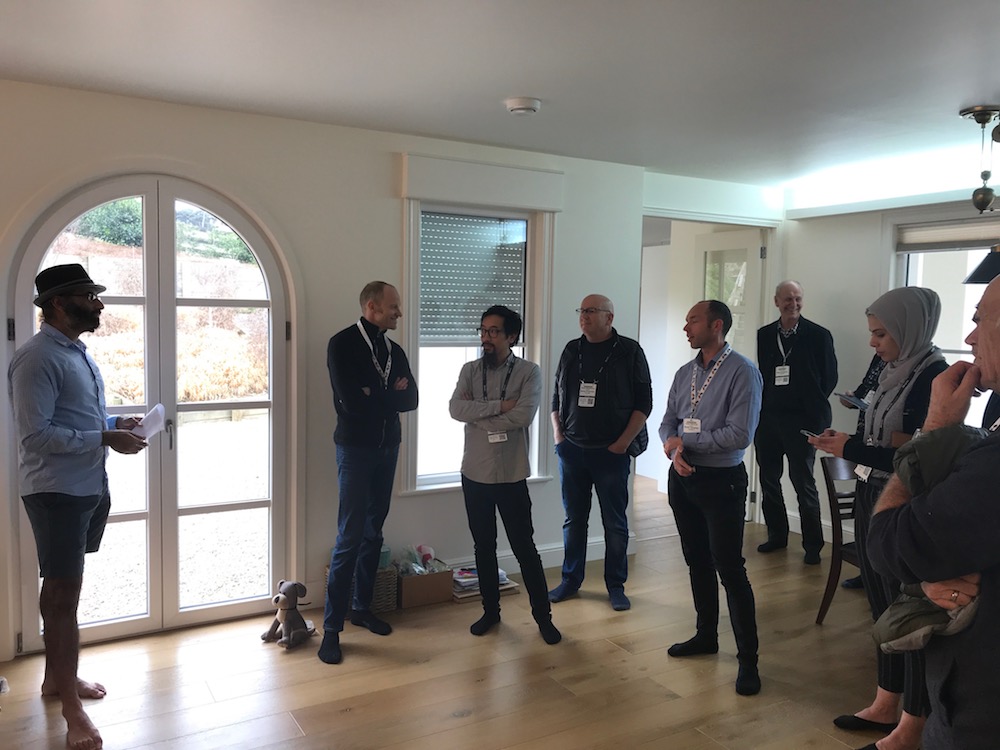Podcast: Play in new window | Download | Embed
Harpal Kler comes from an accounting background, but during the last four years he’s learnt a lot about building and living in a multi-generational Passive House. Now, he’s a big advocate. Their stunning family home was completed in December 2015 by ehaus and is one of a growing number of Certified Passive House homes in New Zealand.
The Kler Multi-Generational Passive House Home
Harpal and his family have graciously opened their home to visitors on many occasions. I first visited during the 2017 Passive House open days. A recent energy show case organised by the German New Zealand Business Chamber of Commerce also featured the Kler home. The house has been featured on Stuff and the property has been beautifully captured in this Barfoot & Thompson video. (No, sorry. It’s not currently for sale!)
Why Build a Passive House in Auckland?
Harpal and his family lived in Melbourne for a while, where they grew accustomed to living with central heating. When they decided to move to Auckland, they didn’t want to be uncomfortable and they didn’t want their children to be unhealthy. Harpal explained that “Auckland is somewhere in between Sydney and Melbourne. We try and pretend like it’s a warm place, but you’ve actually got six months of cold”.
This is a sentiment I completely agree with. “Passive House is not really needed in Auckland”, or “Passive House is a bit over-the-top” are objections I often hear. We seem to deny that it actually gets cold in all regions of New Zealand, and that it stays cold for a reasonable period of the year.
We try and pretend like it’s a warm place, but you’ve actually got six months of cold.
The Kler’s family experience is further evidence that we need more people to experience what a warm, dry and healthy home feels like. Once people have this experience (usually somewhere overseas), they refuse to settle for a standard New Zealand building code house or an even colder, pre-1980s un-insulated wooden shed.

ECO-BLOCK and INTELLO for Airtightness
The walls of the Kler Coatesville home are constructed using ECO-BLOCK insulated concrete forms where polystyrene blocks are put together much like Lego. Concrete is then poured into the hollow blocks to form a very solid, highly insulated and very quiet building structure. Insulated concrete form (ICF) construction has the added benefit of being airtight, so Harpal didn’t need to add an airtightness membrane to the walls.
Pro Clima INTELL Plus was used on the ceilings to complete the airtightness layer of the building.

Passive House Details
Being a Certified Passive House, the Kler home has it’s own listing on the iPHA Passive House Database. From there you can view the building’s key Passive House features and PHPP results. The project documentation also summarises other features such as the 112,500 litre potable water storage system and 6.75kW solar photovoltaic array.

A Good Typology for Auckland
I love the multi-generational aspect of this home. It’s a typology that I think many more families would benefit from. Having grandparents around can be pretty handy, but everyone wants their own space. A multi-generational home caters for separate living, with the benefit of proximity and shared resources.
More Passive House with Timber
Harpal has learnt from his first experience with Passive House. He’s learnt that he loves it, and wants to build more. He’s currently planning two more dwellings on their land in Coatesville.
Harpal has also learnt that Passive House can be achieved relatively simply, using materials and techniques that would be familiar to most kiwi builders. For his next projects, he’s planning on using more traditional timber construction as the basic structure.
This project is further evidence that Passive House is relevant and appropriate for Auckland. And the Kler’s journey demonstrates that once people experience warm, dry and healthy living, they’re very unlikely to settle for anything less.

Leave a Reply